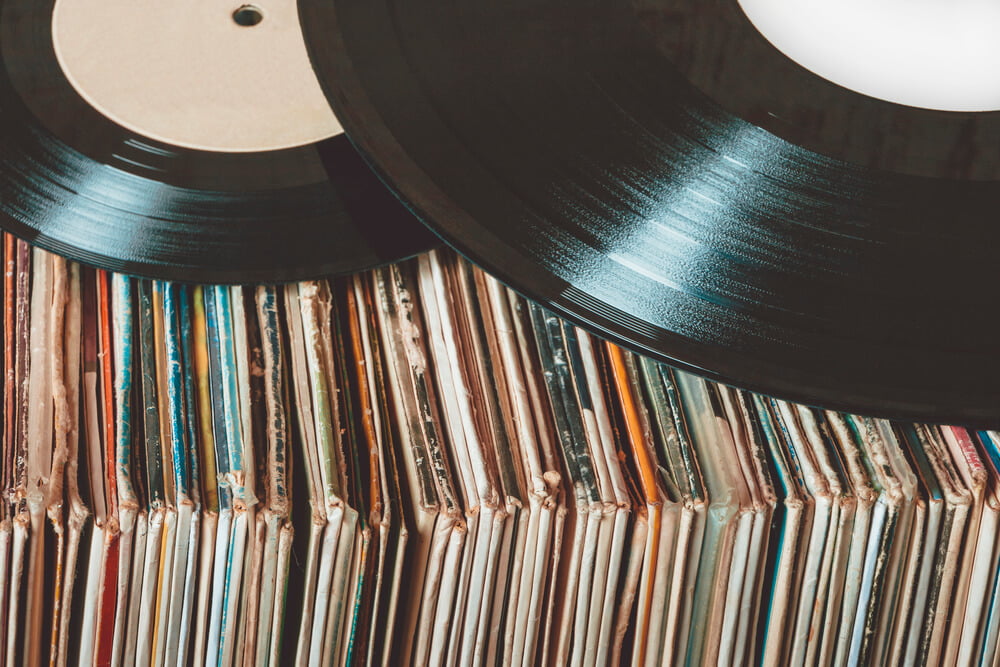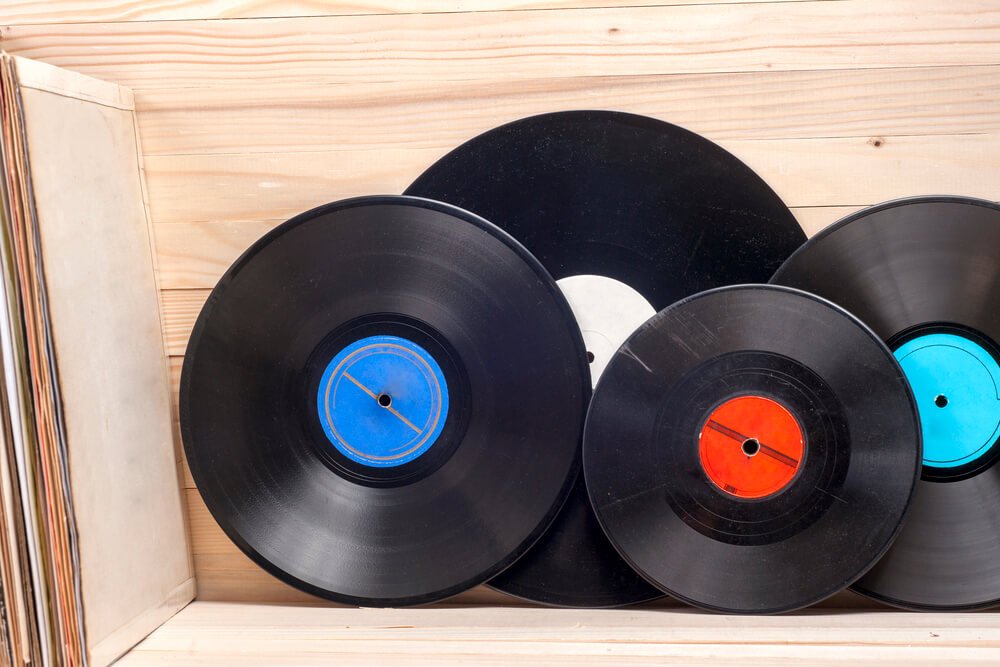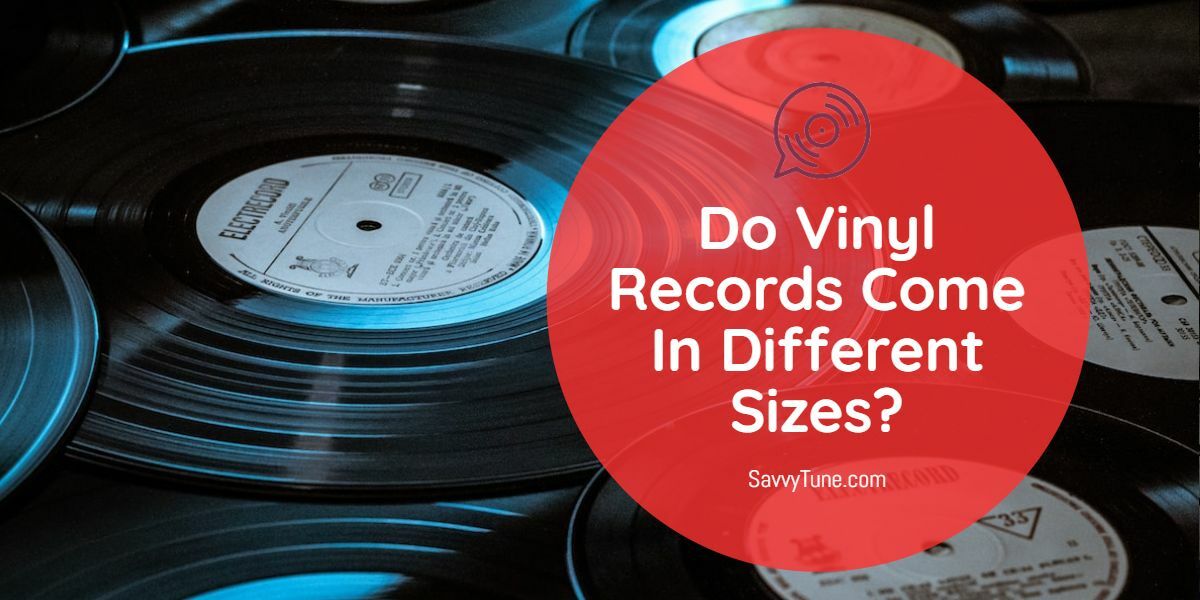Some say vinyl records are making a comeback, but we say those round, flat disks that provided listeners with music for almost a century were never gone.
Even though we now live in the digital era of music playing, vinyl records are still standing strong! But did you notice that some vinyl records aren’t as big or as small as others?
This brings us to today’s question: do vinyl records come in different sizes?
Today, I’ll clear up the confusion by explaining the variations in vinyl record sizes and why they exist. Let’s get to it!
Do Vinyl Records Come In Different Sizes?
Yes, vinyl records are available in 3 different sizes according to the disk’s diameter. These sizes are 7, 12, and 10 inches (18, 30, and 25 cm).
7 and 12-inch vinyl records are the most commonly made and supported by turntables, whereas 10-inch vinyl records are quite rare and difficult to pair with a turntable.
Explaining the Diameters of Vinyl Records
Vinyl records aren’t manufactured with the same specs. They come in multiple sizes, speeds, and weights.
I’ve already mentioned that vinyl records exist in 3 diameters: 7, 12, and 10 inches. Here’s a breakdown of each size:

7 Inches (18 cm)
The smallest of the bunch is the 7-inch vinyl record. When this version first came out, it was supposed to be a solution that allowed for producing singles at a lower cost.
Most 7-inch vinyl records available out there contain only one song on each side. This is why some devoted audiophiles and turntablists call this size of a vinyl record “singles.”
As they’re smaller than other vinyl record sizes, 7-inch versions can store only about 3 minutes (5 minutes at max) of music per side. This is the least capacity compared to other diameters
The reason that 7-inch vinyl records are so popular is how convenient they’re when it comes to distributing extended cuts of songs exclusively.
Related: Technics SL-1500C Vs. Rega Planar 3
12 Inches (30 cm)
On the other end of the spectrum, you’ll find the largest version of vinyl records with a diameter of 12 inches. This is also the most commonly manufactured and used size of vinyl records.
12-inch vinyl records are also referred to as LPs (Long Play) or albums.
The reason behind these associations is the storage capacity of these disks. 12-inch vinyl records can feature around 22 minutes of music on each side — offering a generous 45-minute playtime in total.
This duration meant that these records can fit complete albums within their grooves. Granted, modern counterparts of vinyl records can hold a lot more music, but they lack the vintage elegance that you can only get from vinyl records.
That said, did you know that some 12-inch vinyl records can accommodate only 6 to 8 minutes of music on each side?
These records house electronic dance music and sacrifice playtime in exchange for more room to carry louder sounds and a wider range of bass frequencies.
Users also read: Why Is Reputation Vinyl So Expensive?
10 Inches (25 cm)
Last but not least, there’s the 10-inch vinyl record. This is the least common size out there, so rare that it turned into an item sought after by collectors nowadays.
10-inch records can be dated back to the 1900s and early 1910s. During these years, 10-inch records were still made out of shellac and it wasn’t until 20 more years that vinyl became the new standard.
Nowadays, you won’t easily find a turntable that can play 10-inch vinyl records as most systems don’t support this diameter and consider it outdated.

Does Size Matter in Vinyl Records?
Yes, the size of a vinyl record matters because it determines how much music it can store per side. The larger the diameter of the vinyl record, the more minutes of music it can fit.
Do Different Vinyl Record Sizes Play At Different Speeds?
Yes, vinyl records with different diameters also have different speeds at which they’re played.
Similar to how vinyl records come in 3 sizes, they’re also available in 3 playback speeds. These speeds are expressed in a unit known as revolutions per minute, or RPM for short.
As the name suggests, RPM refers to how many times the record did a complete spin during one minute being played on a turntable. Here’s a breakdown of each vinyl record speed:
45 RPM
45 RPM is the standard speed choice for 7-inch vinyl records.
Although it takes a bit away from quality, most listeners don’t mind the slight loss if it means they can get more music.
33 RPM
33 RPM is the most common speed for 12-inch vinyl records. It’s not too fast that it compromises the sound quality, nor is it too slow that it reduces the storage capacity of the record.
That said, the popularity of 33 RPM on vinyl records didn’t start until the late 1940s when they were marketed for their ability to play full classic performances on one side only.
78 RPM
Finally, we’re looking at the fastest yet least used speed — 78 RPM.
The problem with vinyl records played at 78 RPM is that they carried the least amount of music among the other speeds.
Granted, the audio quality was higher, but that didn’t convince listeners to buy multiple records for the same duration of music only one record played at 33 RPM can offer.
Not to mention, 78 RPM records were more prone to breakage and scratching than records of lower speeds.
This speed was soon forgotten and became so rare that most record players can’t play at 78 RPM.
Must read: Do Thrift Stores Sell Vinyl Records?
The Relationship Between Size, Speed, Quality, and Longevity
Higher speed corresponds to:
- Better sound quality.
- Less music storage capacity.
With a record rotating faster, the sound output is more refined and synced, but there’s less time and room to carry music.
On the other hand, a record rotating slower will drop in audio quality because of delay and distortion, but there’s more time and space to hold music.
As a result, 7-inch vinyl records hold less music than 12-inch records but they offer improved quality. The opposite is also true.

